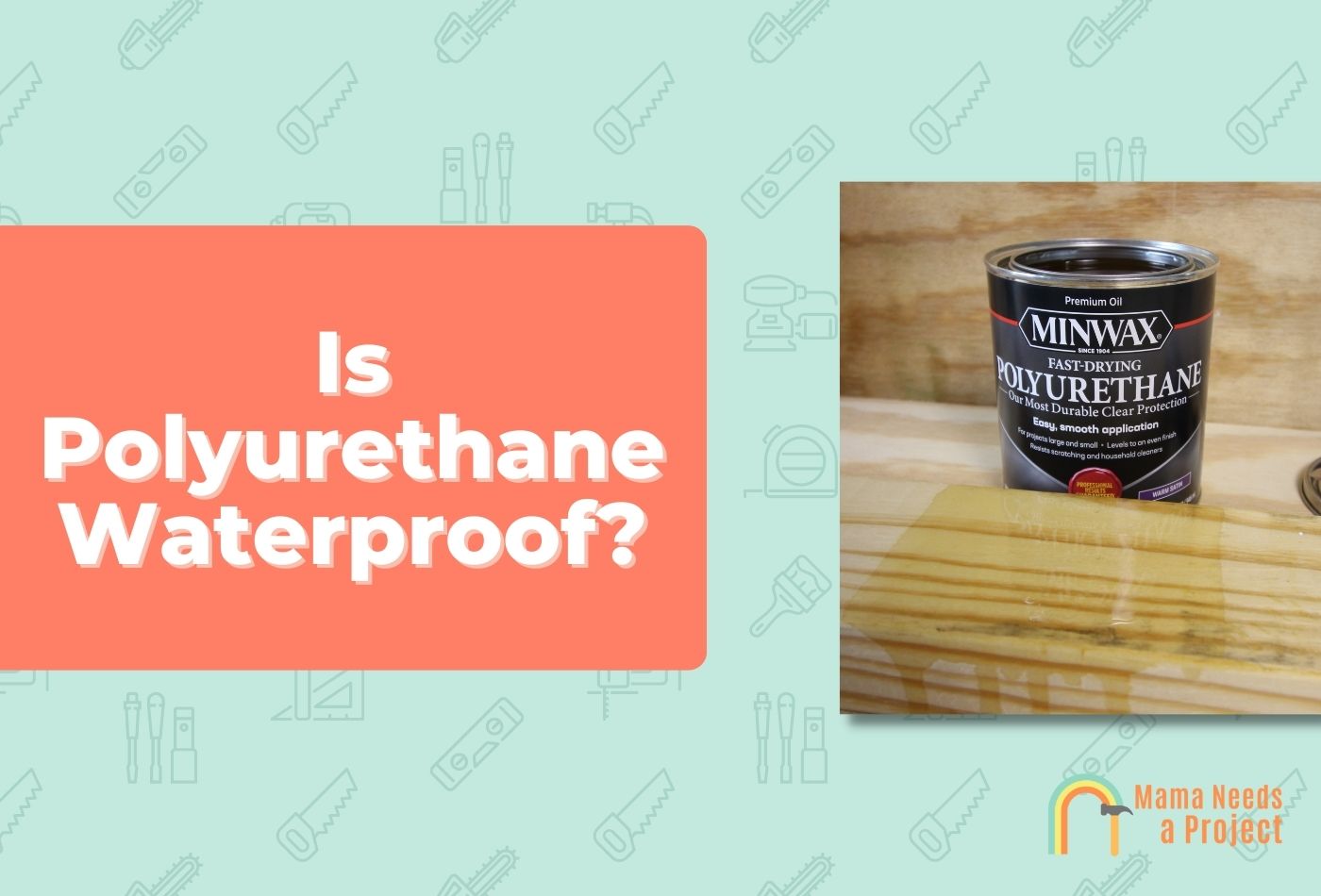Is Polyurethane Waterproof? (Here’s What You Need to Know!)
Polyurethane is an awesome way to protect your wood’s surface while showing off its natural beauty.
This finish can be used on all kinds of woodworking projects for added protection, but is polyurethane waterproof?
In this post, I’ll uncover the truth about using polyurethane to waterproof wood and much more. Let’s dig in!
- Both water and oil based polyurethane are not technically waterproof, but it does make wood water resistant.
- You can use wood oil or other sealants to truly waterproof wood if necessary.
Is Polyurethane Waterproof?
Technically speaking, no, polyurethane is NOT waterproof. However, it IS water resistant.
This means that it might not completely protect your wood’s surface against water, but it’ll prevent most of it.
The number of polyurethane coats plays a pretty big role in determining how much protection you’ll get, including water resistance.
Is Minwax Polyurethane Waterproof?
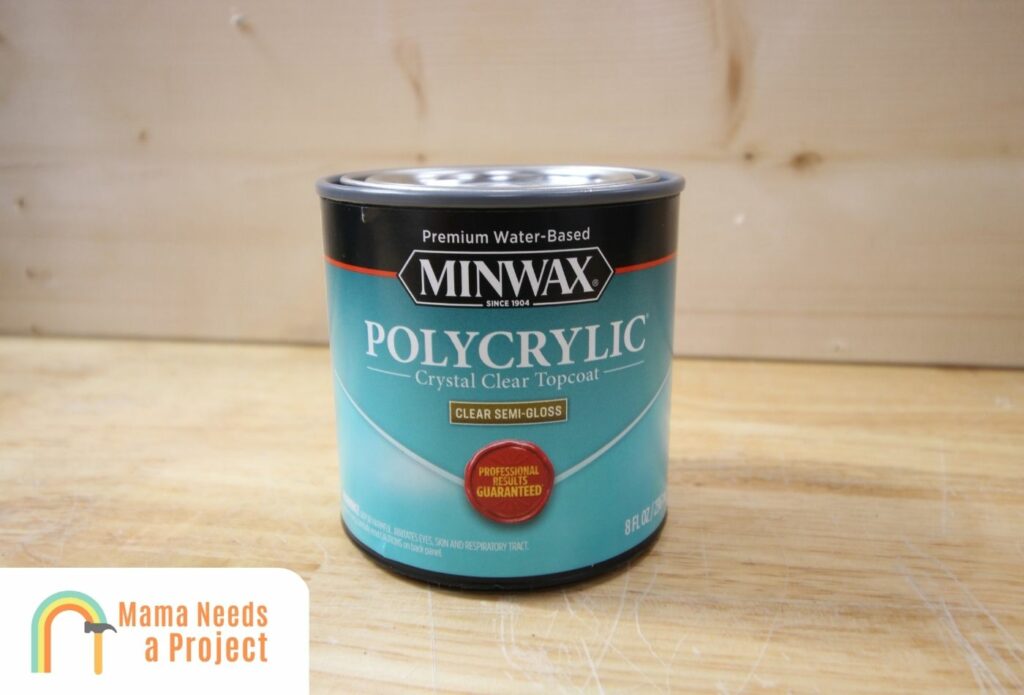
No, Minwax polyurethane is not completely waterproof. While it protects wood similar to other polyurethane coatings, it doesn’t form a completely waterproof barrier.
Waterproof vs. Water Resistant
If you look up the definition of waterproof in the Merriam-Webster Dictionary, it states, “covered or treated with a material to prevent permeation by water.” That means water can NOT break that barrier. Unfortunately, that is not the case for polyurethane.
However, the Oxford Dictionary states water resistant means “able to resist the penetration of water to some degree but not entirely.” This describes polyurethane perfectly. It does create a protective seal on wood but doesn’t make the wood waterproof.
Because of the small pores in the coating, over time, small amounts of moisture can eventually seep their way into the polyurethane and cause cracking and peeling.
What Happens if Polyurethane Gets Wet?
So, what happens if your polyurethane protected wood gets wet? There are two main factors that can determine the outcome:
- How much moisture is on the polyurethane?
- How long has the moisture been sitting on the polyurethane?
If you have a simple spill, like a cup of water, and clean it up immediately, the polyurethane won’t be harmed. This is a perfect example of the polyurethane doing its job because of how well it repels water. It’s meant to be a barrier between small amounts of moisture and the wood surface.
On the other hand, let’s say a pipe burst, and you have flooding on your hardwood floors. That much water sitting on the polyurethane for an extended time will damage the barrier.
The water will penetrate through the polyurethane and soak into the wood, causing it to swell, warp, and potentially rot over time. Unfortunately, even if you apply multiple coats of poly on wood, it’s not meant to waterproof wood.
Water will break down water-based polyurethane quicker than oil-based, so keep that in mind when choosing which type you want to use on your wood surfaces.
How Long Does Polyurethane Last Outdoors?
If you’re looking to protect your outdoor furniture, decking, or other projects – you might wonder how long your polyurethane coating will last.
It’s hard to say precisely how long polyurethane will last outdoors in the elements. It depends on the climate, weather the wood is exposed to, and the type of polyurethane you use.
Some companies formulate polyurethane specifically for outdoor use, which has extra additives to help it without the elements such as humidity, rain, and UV rays.
Even if you use an exterior polyurethane mixture, in normal conditions, you’ll need to reapply the polyurethane every two to three years to protect your wood. If you accidentally use an interior polyurethane, you’re looking at just a few months until you need to reapply.
How Many Coats of Polyurethane Does it Take to Waterproof Wood?
While it won’t completely waterproof wood, you should apply three to four coats to any surface you want to create a water-resistant barrier on.
This is a good rule of thumb for both oil- and water-based polyurethane.
If you apply just one layer, don’t expect much protection against water for your project.
Which is Better: Oil-Based or Water-Based Polyurethane for Waterproofing Wood?
Before purchasing polyurethane for your next project, you should know the differences between oil- and water-based polyurethane.
There is a bit of a debate on whether oil based is more durable than water-based, but that’s really going to depend on what it’s being used for and if you choose a high-quality polyurethane.
Oil-Based Polyurethane
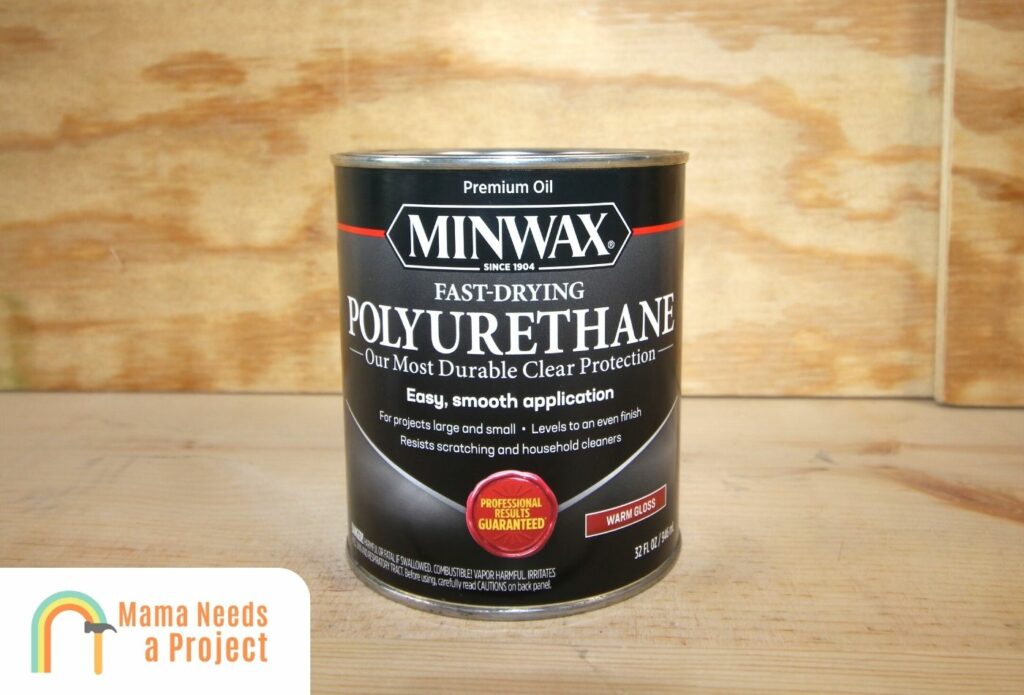
Oil-based polyurethane is made using oil solvents as the base.
If you choose exterior polyurethane, it has added chemicals and agents to help it last longer and protect your wood. It comes in brush-on and sprays options making it a versatile choice for just about any project.
Oil-based poly is a popular choice for hardwood floors because it gives the wood a warm yellowish glow and, in most cases, is more durable than water-based.
The downside is that it takes a lot longer for oil-based to dry between coats, so you need to plan accordingly when using this type of poly.
Something else to keep in mind is that you must be extremely careful and thorough when cleaning up after applying oil-based poly. Here are a few things to keep in mind when applying an oil based finish:
- Cleanup can be tricky. Oil can’t be cleaned up using soap and water. You must use mineral spirits to clean any brushes and surfaces with urethane.
- It’s flammable! When working with flammable materials, you should be cautious and dispose of them properly.
It’s also important to note that oil-based polyurethane has a strong odor until it is done curing. If you use it, be sure to use the appropriate protective gear and apply it in a well-ventilated area to avoid any health risks.
Is Oil-based Polyurethane Waterproof?
Unfortunately no, it is not waterproof; however, it is usually more water resistant than its water-based counterpart.
Water-Based Polyurethane
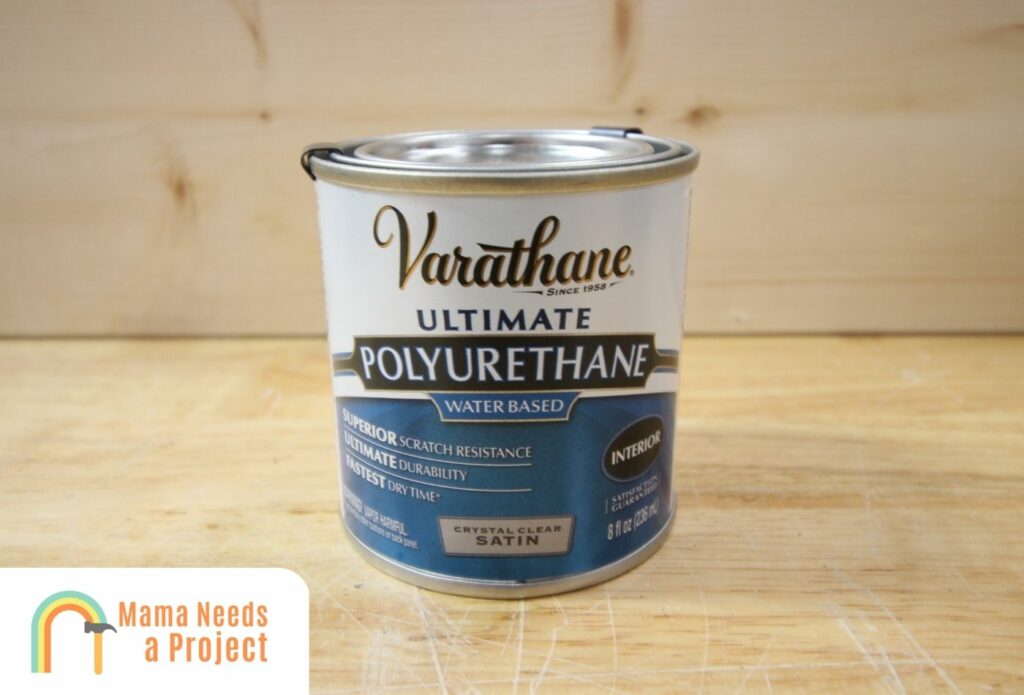
Water-based polyurethane is a popular choice for all kinds of woodworking projects. Instead of oil as the base, it has a water base, making it much less toxic and easier to clean up. The drying time is also much faster – which can be convenient for some projects.
Unlike oil-based polyurethane, which dries golden or yellow, water-based often dries completely clear. This is an excellent choice when you have stained your project with a specific color and don’t want it to be altered by the polyurethane coating. It’s also perfect to use raw wood for a project without any coloring agents.
Many woodworkers like to use water-based poly when they want a thin transparent protective layer added to their projects. Oil-based is much thicker, but water-based is perfect for those projects that don’t need a thick coat to protect the wood surface.
Cleanup is much easier with this type of polyurethane because you can use just soap and water to clean any tools or surfaces with excess poly.
Quality is everything when it comes to water-based polyurethane options. Though you may be tempted to purchase the cheaper option, as the saying goes, “You get what you paid for.”
Buying lesser-quality water-based poly will often require more layers. The cheaper the product, the thinner since they add more water to the mixture.
Is Water-Based polyurethane waterproof?
Again, polyurethane is water resistant, not waterproof. They do make exterior water-based polyurethane options which will work better – but they aren’t completely waterproof.
However, if you really want to use poly on your outdoor project, I would recommend using oil-based since it is thicker and dries harder than water-based.
Wondering if polyurethane is safe to use around food? Check out my guide to learn if polyurethane is food safe!
How to Protect Wood from Water
If you truly need your wood to be waterproof, there are a few options to seal it and get the protection you desire.
1. Use Wood Oils
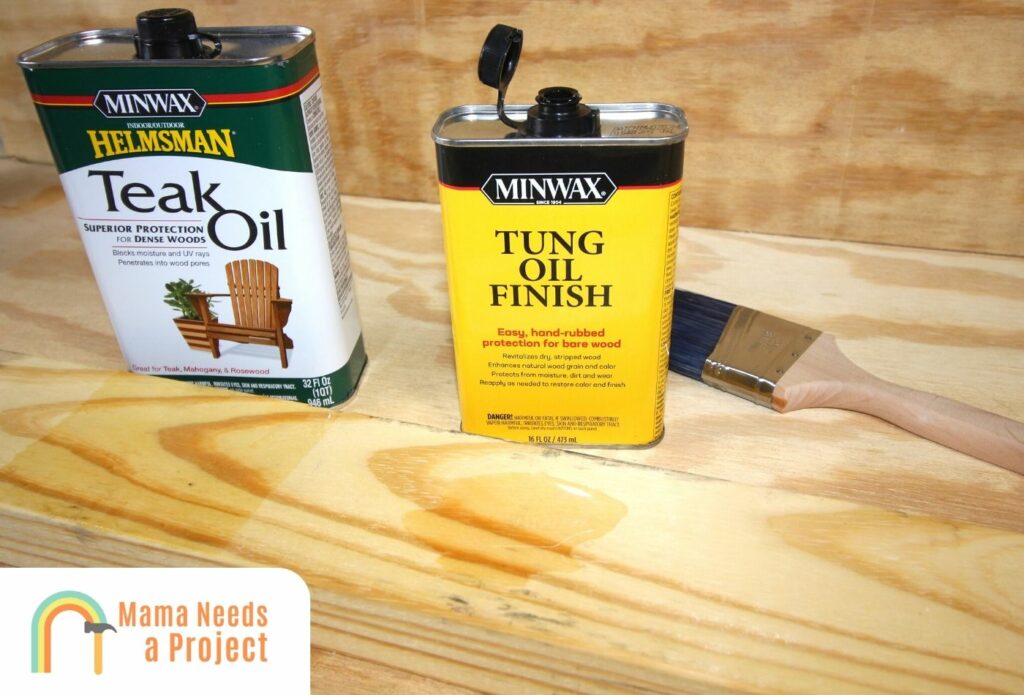
If you’re looking for a more natural way to make wood waterproof, applying wood oil is a great option.
Both tung oil and linseed oil are great oils that can give your wood more protection while showing off its natural beauty. These are super easy to apply and will protect your wood surface for years.
2. Apply a Sealant
If you want maximum protection, applying a sealant can make wood waterproof. Instead of soaking into the wood, sealants will sit on top of the wood to prevent water absorption.
For example, using an epoxy sealant will offer your wood extreme protection so you don’t have to worry about it rotting or decomposing.
3. Use a Stain Sealant Combo
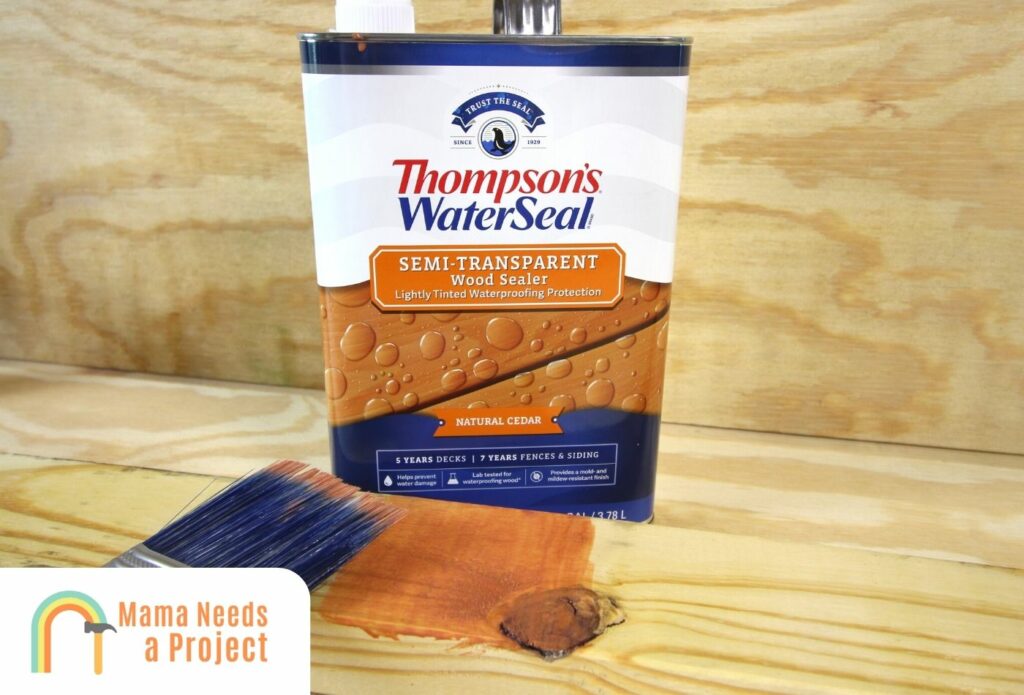
Finally, using a stain sealant combination can be a simple way to protect wood from water.
These are similar to a traditional sealant except with the addition of color – so you can give your project the look you want.
This means if you want to keep the look of your natural wood, it’s better to opt for a traditional sealant or wood oil, but if you want some color – a stain sealant combo makes sense.
Stain sealant combos come in a variety of colors depending on your needs which is why they’re commonly used on decking and outdoor furniture.
Check out my guide to learn if spray paint is waterproof and how to use it on wood!
FAQs
Does polyurethane waterproof wood?
No, polyurethane does not waterproof wood. While it adds more protection and adds water resistance – your wood won’t be completely waterproof after applying polyurethane.
Is varnish waterproof?
Varnish is waterproof, unlike polyurethane. This sealant will give you great protection, making it a good choice for outdoor wooden furniture.
Is polyurethane waterproof on concrete?
Just like with wood, polyurethane will provide great protection for concrete, but it will not completely waterproof the surface.
Final Thoughts
Polyurethane is a fantastic, versatile sealant for wood surfaces and can be used in all kinds of projects, such as furniture building, flooring, and small woodworking projects.
Though not waterproof, polyurethane is an excellent barrier between the wood and regular spills and stains.
If you’re wondering how to waterproof wood completely, consider using a wood oil like tung oil or linseed oil, or use a sealant like epoxy.

Miriam Ronne wears many hats, including but not limited to freelance writer, blogger, professional quilter, serial DIYer, and obsessed dog mom. She loves to teach beginners how to do all sorts of crafts and techniques. If she’s not writing her next blog post, she’s either sewing a new project or playing with her pup. You can find Miriam on her blog, Stitch Obsessed, or connect with her on Instagram.

